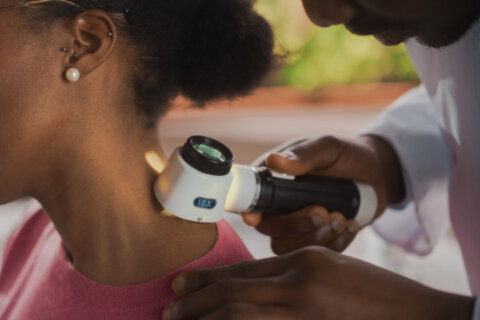Egg freezing. Egg storing. It’s the process that gives women of all ages hope to use their own genetic pool to make a baby sometime in the near or distant future. Egg freezing needs to be talked about a lot more, plain and simple.
In your early 30s, it may be time to have a heart-to-heart with yourself and ask the following questions: How many children do I want? Am I willing to get pregnant without having a partner? How important is it to have my own biological child?
You don’t ever want to look back when it’s too late and say to yourself, “I wish I had been proactive in planning for my family.” You may need to bring up the subject of egg freezing to your health care provider, which should be a gynecologist for the most productive conversation.
Women have to take the initiative since many health care providers don’t have the time or knowledge to help prepare you for future family planning. The best candidates for egg freezing are women between the ages of 31 and 38 who are delaying pregnancy by at least two years. For this age group of women, the success rate of a live birth with either frozen eggs or frozen embryos is 40 to 50 percent.
[See: The Fertility Preservation Diet: How to Eat if You Want to Get Pregnant.]
If you’re a healthy woman older than 38, do not wait to meet with an infertility doctor to consider freezing your eggs. Women older than 40 are still candidates for freezing, but their success rates in having a full-term baby are less than 10 percent.
The cost of egg freezing often separates those who think about the process versus those who can actually afford to do it. One cycle of egg freezing can cost around $10,000 to $12,000, and often, two cycles are needed to bank a couple of healthy eggs in older women. Fortunately, companies like Facebook and Apple are at the forefront of embracing and protecting a woman’s choice to delay motherhood. They are championing their career-driven women employees by supporting them in the family-planning department, which translates into welcoming health insurance benefits.
A recent study found that the most common reason for a woman to freeze her eggs was a “lack of a current partner and not only to pursue career advancement.” The Guttmacher Institute, a prominent reproductive health think tank, stated that “controlling family timing and size can be a key to unlocking opportunities for economic success, education and equality” for women. They also found that this form of contraception “will help increase women’s earning power” and ultimately “narrow the gender pay gap.”
That’s surely a lot of positive reasoning in favor of egg freezing as an option to preserve fertility. It used to be that family planning meant the use of birth control — and the discussion of what types of birth control — to prevent pregnancy, but now egg freezing has become an entirely new type of planning for the future.
[See: Why Can’t I Get Pregnant?]
If you’re interested in learning more about egg freezing, it’s important to meet with an infertility specialist who can walk you through the process. Fertility medications are given during the first half of you menstrual cycle to hyper-stimulate the ovaries to create as many eggs as possible. You are closely monitored during this time to make sure you are tolerating the medications well and not experiencing side effects such as headaches, mood swings, abdominal pain, bloating and hot flashes.
Once your ovaries are primed to create mature and healthy eggs, a vaginal ultrasound with an attached needle is used to get to the ovaries and follicles through the back of the vagina. The fluid inside each follicle contains an egg, which is aspirated through the needle and suctioned into a sterile container. The eggs retrieved are than stored in a freezer until you want to use them in the future.
What happens when you’re ready to defrost your precious eggs and are ready to get pregnant? The next steps involve in vitro fertilization. There are five basic steps in the process of IVF, but those who have frozen their eggs bypass steps one and two. The third step is finding viable sperm, either from your partner or using a donor sperm. The fourth step involves combining the eggs and sperm in a controlled laboratory setting in hopes of creating healthy embryo’s. Once the embryos have been created and are thriving, the final step involves transferring them into the uterus. It’s recommended to transfer one or two healthy embryo’s into the uterus.
Side effects from IVF include mild cramping, bloating, constipation and breast tenderness.
Another painful side effect of the process is the cost: The current price tag for egg freezing is $10,000 to $12,000, plus yearly storage fees, which sidelines many women who would love the chance to put a hold on their fertility. Small boutique egg freezing clinics are starting to appear to make the process more affordable, less intimidating and less clinical.
[See: In Vitro Fertilization Grows Up.]
Egg freezing is growing in popularity. The conversation must start with a gynecologist as part as progressive family planning during an annual exam. It’s my hope that routine preventative care for women will include fertility screening starting at age 30 and insurance companies helping women afford this costly process.
More from U.S. News
In Vitro Fertilization Grows Up
The Fertility Preservation Diet: How to Eat if You Want to Get Pregnant
What to Know About Freezing Your Eggs originally appeared on usnews.com







